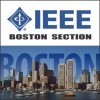Space Plasma Interactions with Spacecrafts – Fall 2014

Date & Time: Oct. 27, 30, Nov. 3, 6, 10; 7 – 9PM (note session schedule of multiple sessions per week)
Location: TBD
Speaker: Dr. Shu T. Lai, MIT
Guest lectures by Dr. Rezy Pradipta (Boston College) and Prof. Min-Chang Lee (Boston University) on source mechanisms and remote sensing of space plasma turbulence.
Text: “Fundamentals of Spacecraft Charging” by Shu T. Lai, Princeton University Press, 2011.
By Oct 15:
Members: $395
Non-Members: $420
After Oct 15:
Members: $420
Non-Members: $450
Decision: Friday, October 17th
This course assumes that the attendants have little or no background in this area.
Space plasmas interact with space systems. Spacecraft charging affects electronic measurements onboard and may be destructive for a spacecraft. This course begins by explaining what, where, when, and why spacecraft charging happens. The physical mechanism of spacecraft charging is clearly explained.
Useful parameters of the space plasma are presented and explained. Electron flux and electron temperature control the onset of spacecraft charging.
Material surface properties are important for spacecraft charging. Surface conditions and ambient electron energies can significantly affect the yields of secondary electrons, backscattered electrons, and photoelectrons. The yields are crucial in determining surface potentials.
Some mitigation techniques are discussed. Examples and exercises will be given. For illustrating ideas, some exercise solutions will be worked out in full.
Electron and ion beam emissions from spacecraft are important for space propulsion and for spacecraft potential control. Beam emissions interact with charged spacecraft. Beam return is an important aspect that limits the beam current emitted and the spacecraft potential attained. Beam ionization can significantly affect the spacecraft sheath and the spacecraft potential. Supercharging will be discussed.
Deep dielectric charging occurs in the Van Allen radiation belts and some planetary magnetospheres. High energy electrons and ions can penetrate into dielectric materials and stay inside. The charges build up internal electric fields. When a critical electric field is reached, a discharge hazard occurs. Examples of real spacecraft anomalies will be presented and studied.
Target Audience
This course will be beneficial for the students, researchers, and space engineers.
Outline
● Brief overview – The Earth’s space plasma environment
– The solar wind
– The magnetosphere
– The ionosphere
– The auroral region
– The radiation belts
– Solar X-ray bursts
– Solar coronal mass ejections
– Corotational interaction regions
● Source mechanisms and remote sensing of space plasma turbulence
● Introduction to Spacecraft charging
– What, why, where, and why
– Capacitance charging
– Differential charging
● Current balance – The spacecraft as a Langmuir probe
– Attraction of opposite charges
– Repulsion of like charges
– Langmuir’s orbit-limited charge attraction
– Spacecraft potential determined by current balance
● Surface material properties – Secondary and backscattered electrons
– Secondary electrons
– Backscattered electrons
– Useful empirical formulae
● The role of surface conditions in electron emissions
– Secondary electrons
– Backscattered electrons
– Photoelectrons
● Rise of Electron flux
– Electron flux in 20-40keV range as a marker of spacecraft charging
– The rise of electron flux in relation with the rise of electron temperature
● Onset of spacecraft charging
– Existence of critical temperature
– Critical temperature as a criterion for the onset of spacecraft charging
– Dependence of spacecraft potential on the ambient electron temperature
– Comparison of calculations with real spacecraft measurements
● Spacecraft charging in sunlight
– Photoemission, photoelectron energy, and photoelectron current
– Monopole-dipole potential in sunlight
– Trapping of photoelectrons in potential wells
– Effects of surface conditions
– Charging of mirrors
● Deep Dielectric Charging and Anomalies
– Is internal charging the same as deep dielectric charging?
– Penetration of high-energy electrons in matter
– High-energy ions penetration; Bragg peaks
– Critical electric field as the criterion for probable discharges
– Paschen and non-Paschen discharges
– Townsend criterion of sustained discharges
– Double layer formation inside dielectric materials
– Discharges initiated by meteor or debris impacts
– Electron fluence
– Delay of anomalies due to deep dielectric charging
– Triple-junction and initiation of discharges
– Mott transition, Poole-Frenkel effects, and Zener breakdown
● Mitigation Methods
– Field emission
– thermionic emission
– electron beam emission
– low-energy ion emission
– plasma emission
– semi-conducting paint
– water and chemical sprays
– mirror reflection
– ultraviolet lamps
– shielding of high-energy electrons
– avoidance of electron deposition
– some common practices
Expertise and Experience
Dr. Shu T. Lai is a world-class expert in Spacecraft Charging. He has published about one hundred publications, including two recent books. One book is titled “Fundamentals of Spacecraft Charging”, Princeton University Press, 2011. The other book is titled “Spacecraft Charging”, AIAA Press, 2011. Both books are well received. For example, the following are three excerpts taken from reviewer comments printed on the back cover of the Princeton book: 1.“Lai has produced the definitive work on the physics of spacecraft charging” – Alan Tribble, Author of The Space Environment: Implications for Spacecraft Design. 2.“This is by far and away the most comprehensive reference on the physics of spacecraft charging. I will use it in my teaching.” – Daniel E. Hastings, Dean of MIT. 3.“Fundamentals of Spacecraft Charging is by a well-known leader in the field.” – Henry B. Garrett, coauthor of Spacecraft Environment Interactions.
Dr. Shu T. Lai is a Fellow (2005) of IEEE for significant contributions in spacecraft charging. He was the Chair of the IEEE Nuclear and Plasma Chapter, Central New England Section, 1994-1997. He is also a Fellow of the Institute of Physics. He is the Senior Editor in charge of Space Plasmas, IEEE Transactions on Plasma Science.
Dr. Lai has presented nearly two hundred papers and speeches at technical conferences and scientific meetings. In addition, he has presented lecture series on spacecraft charging to the doctoral and masters students at MIT, Swedish Institute of Space Physics, Umea University, and Lulea University, Kiruna, Sweden.
